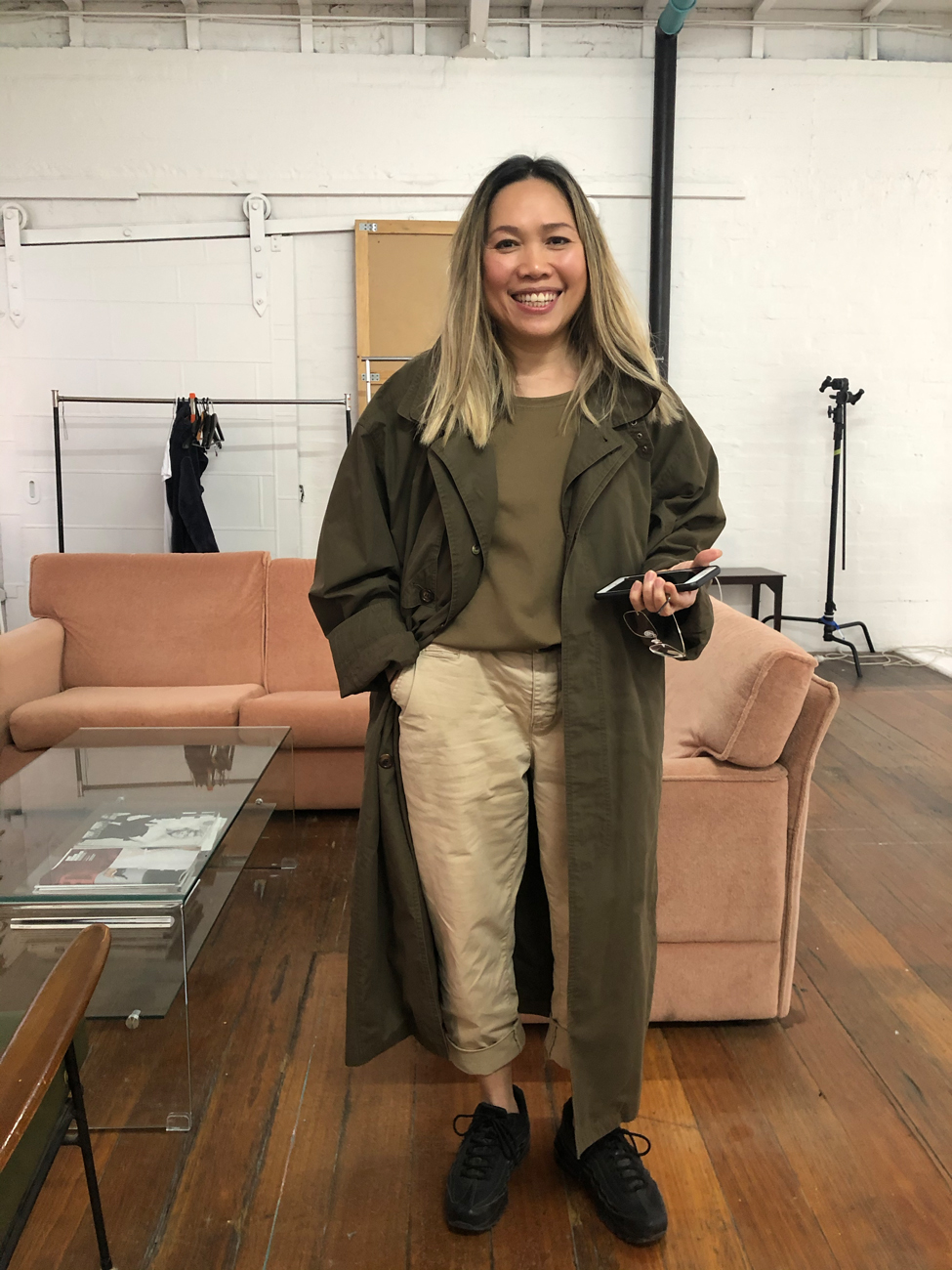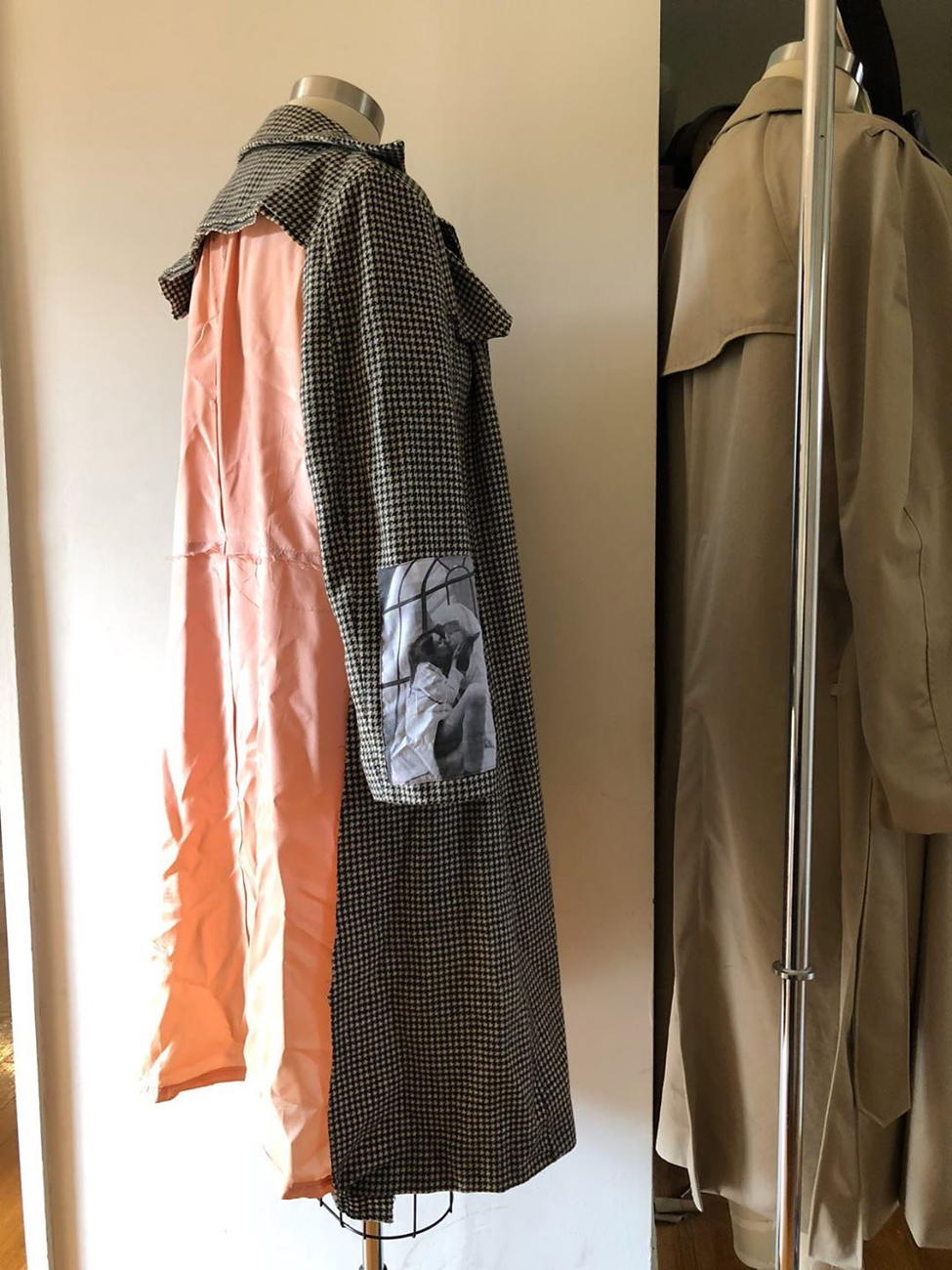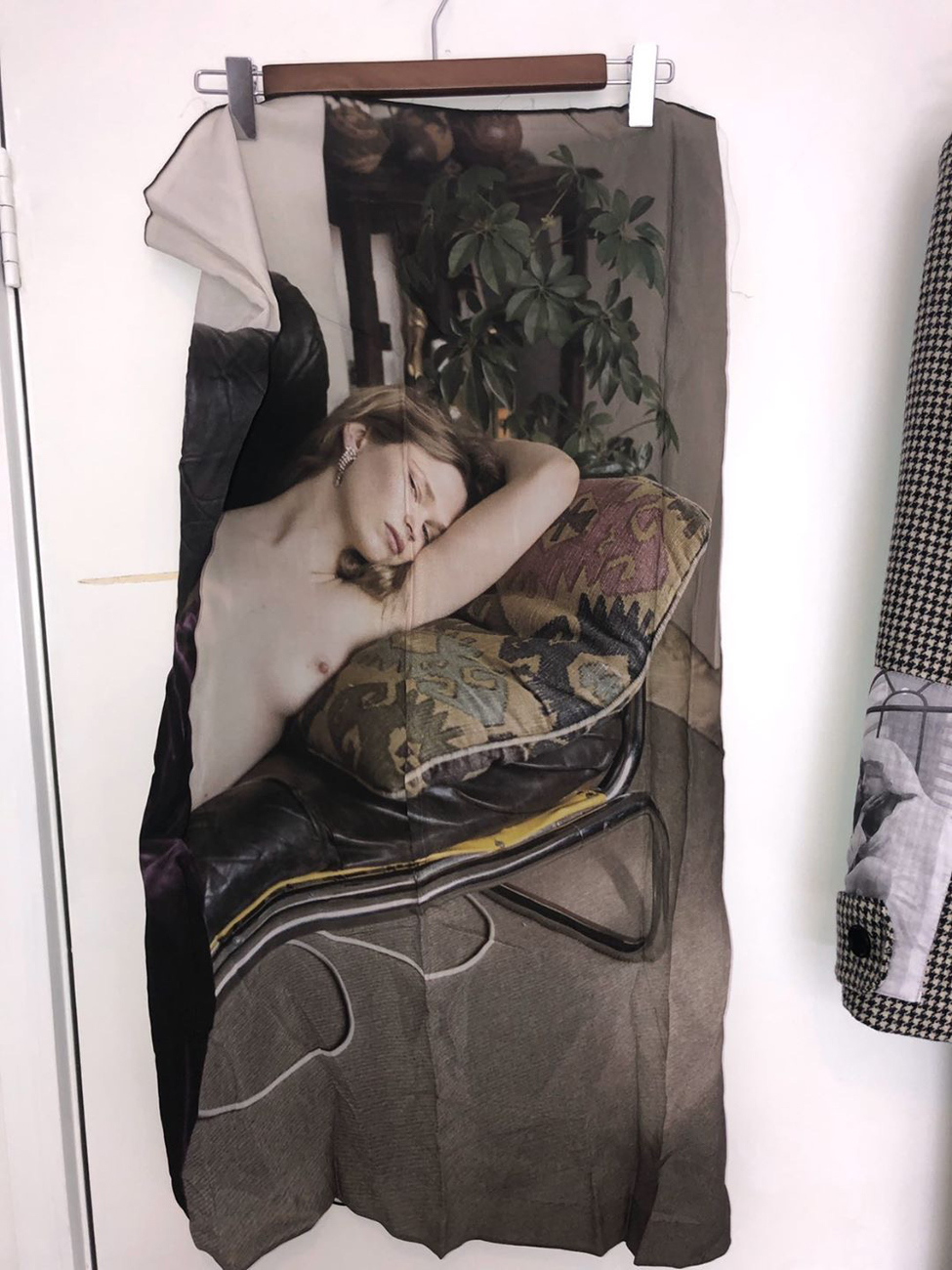Kim Clark

KIM CLARK INTERVIEW by by Shannon Green:
From an array of untouched second-hand garments, KIM CLARK welcomingly embraces the rich softness of velvet and creates a luxurious collection. KIM who has an industry background in design and a MASTER OF FASHION (DESIGN) from RMIT, creates a collection in collaboration with MATT FINISH that reflects her practises own intrigue of culture and human behaviour. With an eye for sustainability working with recycled garments created an exciting opportunity.
Through an assortment of secondhand garments ready to be recreated and a preference for interesting shapes and the sturdy nature of cotton when deconstructed, KIM upcycled one jacket, jumper and an unfinished-toiled velvet skirt. From these three core pieces, KIM “jazzes them up a bit”, the purple tones from velour fabrications creates an air of mystery, an image of “a body without a face at the front of the jumper works well with this intention” and creates the initial direction of the small three piece collection.
The MATT FINISH images, “were very contemporary art imageries. On the other hand, the jacket was very conservative. I think the contrast of these two were very fascinating. I wanted to keep the front as it was, while I cut the back shell out and used this material to create a backpack.” The idea of mystery carries on as another MATT FINISH “image [acting] as the lining of the flap that only can be seen when it is opened.” “Matt finish has amazing imageries. [and] love[d] picking images that are contrasting with the garments.”
This reconstruction of existing garments created a somewhat different design process, “[it’s] challenging because the structure and fabrication restrain your ideas. I often start with analysing which elements are needed to be changed or can be changed. Then how to utilise and re-use all elements with minimum waste. The next steps are visualizing the modification on the mannequins for final adjustment. Then pattern making, unpicking, cutting and sewing.”




Unlike the normal design process, “The garments were recreated just by adding imageries and changing some fabrication”, very little changes were made the silhouette. One of the biggest challenges that came with the design process is creating in the current climate of COVID-19, whilst beginning of MATT FINISH began before COVID-19, for the most part the design process was during the thick of it. This created “Limitations in material choices and access to machinery [that] are the most challenging setback during this time. Therefore searching for alternative solutions affects the process of design and place limitations on what I can achieve.” Whilst MATT FINISH echos a suitability ethos, and with the construction of minimal waste, KIM aimed to incorporate most of the waste in the collection using “the back of the jacket to create a back bag and straps. The lining of the skirt (toile) were used on the front panel of the jumper and the skirt used to make arms for the jumper. The cutout arms of the jumper I used as cloth at home, and they will eventually go to our compost bin.”
However one the most important aspects of limiting waste, regardless of fabric scraps is “creating timeless pieces, that helps to prolong the garments life and reduce overconsumption”. This principle is applied in KIM’S own practise, “sustainability is a very complex issue, therefore I often try as much as I can, such as sourcing biodegradable material, buying deadstock, applying minimal waste cutting techniques, recycling old toiles, using found garments for toiling and producing good quality products that last… I often try adding modular/transformable features into the designs in order to make them more fun to wear and hopefully increase their lifespan.” “I believe sustainable practice will eventually be dominant in fashion. More brands will be focusing on different ways of being sustainable. From sourcing materials, production, logistic, distributing, packaging as well as the working conditions of people manufacturing at the end of the supply chain.” As a designer, my responsibility is to make sure products are designed in a most thoughtful way.”